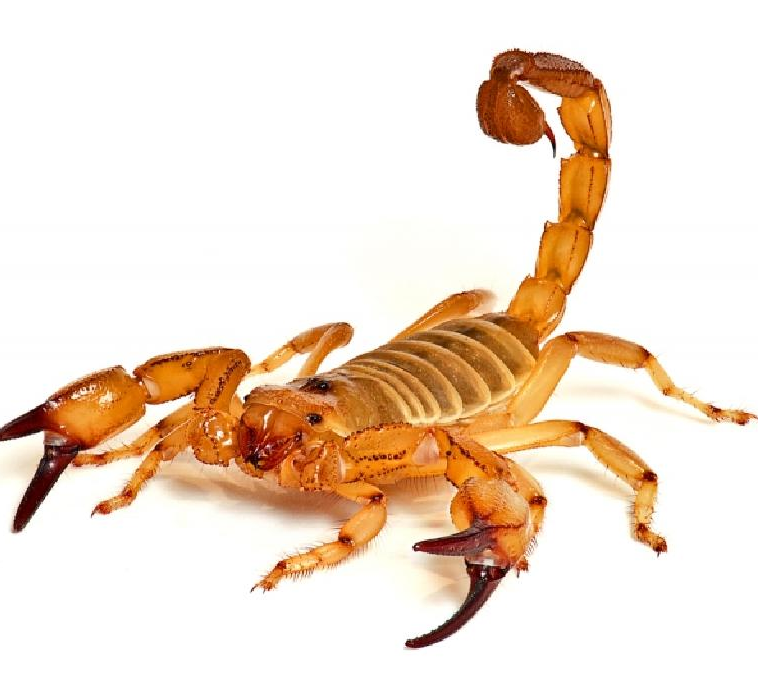Risk factors and epidemiological profile of scorpion accidents in Brazilian regions between 2017 and 2024
DOI:
https://doi.org/10.31533/pubvet.v19n03e1749Keywords:
Arachnid, Brazil, scorpionism, urbanismAbstract
The aim of this study was to analyze the risk factors and epidemiological profile of scorpion accidents in Brazilian regions due to their high incidence in the country. Scorpions are invertebrate arthropods, belonging to the arachnid group, with the ability to produce venom that can be inoculated into other animals, including humans, and can trigger various mild clinical manifestations and even lead to death. Due to the expansion of urban areas, these animals have sought shelter in peridomiciliary spaces and can sometimes be found inside human homes and dwellings, which is one of the factors behind the increase in accidents in recent years. As well as increased urbanization, the climate can also be cited as another risk factor since the warmer seasons make it easier for these animals to reproduce. This research was carried out based on cases of scorpion accidents in Brazilian regions between 2017 and 2024, analyzing cases registered with the Department of Informatics of the Unified Health System (DATASUS). In Brazil, cases of scorpion accidents are becoming increasingly important because of the high toxicity of these animals' venom, especially among the elderly and children, in whom its lethality rate is high. Among the risk factors contributing to the increase in scorpionism cases in Brazil, urbanization can be cited as the main reason for the growing presence of these animals. Cases of scorpionism are present throughout Brazil, with the Northeast and Southeast regions being the most prominent.. It is therefore of the utmost importance to analyze the epidemiology and factors associated with the severity of scorpion accidents in order to provide adequate assistance and reduce the morbidity of these cases. It can be concluded that, between 2017 and 2024, there was an increase in the number of reported cases throughout Brazil, especially in the Northeast and Southeast regions. This increase can be justified on the basis of risk factors, especially warmer and rainier climates, as well as increased urbanization, which causes environmental imbalance, favoring the appearance and growth of this species.
References
Brasil. Ministério da Saúde. Secretaria de Vigilância em Saúde. Guia de Vigilância em Saúde, volume 3, 6ª ed, de 23 de novembro de 2024. Brasília, 2024.
Brasil. Ministério da Saúde. Acidentes por escorpiões. Disponível em: https://www.gov.br/saude/pt-br/assuntos/saude-de-a-a-z/a/animais-peconhentos/acidentes-por-escorpioes Acesso em: 07 de novembro de 2024.
Brasil. Ministério da Saúde. Acidentes com escorpiões cresceram 15% em 2023, de 26 de setembro de 2024. Disponível ePardalkm: https://www.gov.br/saude/pt-br/assuntos/noticias/2024/setembro/acidentes-com-escorpioes-cresceram-15-em-2023#:~:text=Acidentes%20com%20escorpi%C3%B5es%20cresceram%2015%25%20em%202023%20%E2%80%94%20Minist%C3%A9rio%20da%20Sa%C3%BAde Acesso em: 13 de novembro de 2024.
Brites-Neto, J. (2019). Aspectos clínicos e terapêutico de envenanamento por escorpiões em cães e gatos. Revista de Ciência Veterinária e Saúde Pública, 6(2). https://doi.org/10.4025/revcivet.v6i2.46911.
Cajado-Carvalho, D., Galvão, J., Kuniyoshi, A. K., Carneiro, P. S., Leme, A. F. P., Pauletti, B. A., Marengo, E. B., & Portaro, F. V. (2017). Tityus serrulatus scorpion venom: In vitro tests and their correlation with in vivo lethal dose assay. Toxins, 9(12). https://doi.org/10.3390/toxins9120380.
Carmo, É. A., Nery, A. A., Pereira, R., Rios, M. A., & Casotti, C. A. (2019). Fatores associados à gravidade do envenenamento por escorpiões. Texto e Contexto Enfermagem, 28.
Gomes, A. C. M., Campos, G. P., Rodrigues, R. R., Parrela, A. F. B., Rodrigues, B. S. L., Melo-Braga, M. N., Ribeiro Júnior, A. N., & Siqueira-Batista, R. (2022). Escorpiões do gênero Tityusno Brasil: Biologia, bioquímica da peçonha e fisiopatologia do escorpionismo. Scientia Vitae, 13(36).
Guerra, C. M. N., Carvalho, L. F. A., Colosimo, E. A., & Freire, H. B. M. (2008). Análise de variáveis relacionadas à evolução letal do escorpionismo em crianças e adolescentes no estado de Minas Gerais no período de 2001 a 2005. Jornal de Pediatria, 84(6), 509–515. https://doi.org/10.1590/s0021-75572008000700007.
Kalapothakis, Y., Miranda, K., Pereira, A. H., Witt, A. S. A., Marani, C., Martins, A. P., Leal, H. G., Campos-Júnior, E., Pimenta, A. M. C., Borges, A., Chávez-Olórtegui, C., & Kalapothakis, E. (2021). Novel components of Tityus serrulatus venom: A transcriptomic approach. Toxicon, 189, 91–104. https://doi.org/10.1016/j.toxicon.2020.11.001.
Oliveira, I. S., Silva, N. M. A., Ferreira, I. G., Cerni, F. A., Sachett, J. A. G., Monteiro, W. M., Pucca, M. B., & Arantes, E. C. (2024). Understanding the complexity of Tityus serrulatus venom: A focus on high molecular weight components. In Journal of Venomous Animals and Toxins Including Tropical Diseases (Vol. 30). https://doi.org/10.1590/1678-9199-JVATITD-2023-0046.
Sant’Ana, J. L. P., Motta, O. J. R., Vicari, M. V., Rocha, I. B. M., Machado, G. R., Silva, E., & Santana, L. A. (2021). Escorpionismo e inteligência artificial: Uma intersecção promissora? Revista Saúde Dinâmica, 7(1), 20–34. https://doi.org/10.4322/2675-133x.2022.032.
Torrez, P. P. Q., Dourado, F. S., Bertani, R., Cupo, P., & França, F. O. de S. (2019). Scorpionism in Brazil: Exponential growth of accidents and deaths from scorpion stings. In Revista da Sociedade Brasileira de Medicina Tropical (Vol. 52). https://doi.org/10.1590/0037-8682-0350-2018.

Downloads
Published
Issue
Section
License
Copyright (c) 2025 Tábata Carine Alves Moreira, Thereza Christina de Vasconcelos

This work is licensed under a Creative Commons Attribution 4.0 International License.
Você tem o direito de:
Compartilhar — copiar e redistribuir o material em qualquer suporte ou formato
Adaptar — remixar, transformar, e criar a partir do material para qualquer fim, mesmo que comercial.
O licenciante não pode revogar estes direitos desde que você respeite os termos da licença. De acordo com os termos seguintes:
Atribuição
— Você deve dar o crédito apropriado, prover um link para a licença e indicar se mudanças foram feitas. Você deve fazê-lo em qualquer circunstância razoável, mas de nenhuma maneira que sugira que o licenciante apoia você ou o seu uso. Sem restrições adicionais
— Você não pode aplicar termos jurídicos ou medidas de caráter tecnológico que restrinjam legalmente outros de fazerem algo que a licença permita.




